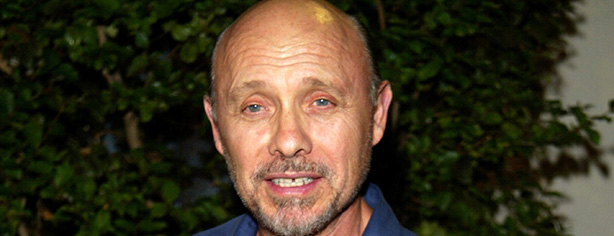
![]() InterMedia Entertainment (IME) designed the DR Star Index® to capture and track rapidly shifting consumer sentiment concerning celebrities in a media-saturated and celebrity-obsessed society. IME conducts this primary consumer research on a quarterly basis to ensure that the index is reflective of current media trends and consumer attitudes. In the latest update of the DR Star Index, we dissect the factors that determine the winners, the losers, and those in-between.
InterMedia Entertainment (IME) designed the DR Star Index® to capture and track rapidly shifting consumer sentiment concerning celebrities in a media-saturated and celebrity-obsessed society. IME conducts this primary consumer research on a quarterly basis to ensure that the index is reflective of current media trends and consumer attitudes. In the latest update of the DR Star Index, we dissect the factors that determine the winners, the losers, and those in-between.
The Winners
The largest upward movement in the rankings for any celebrity in the latest DR Star Index is Hector Elizondo, who moves up 280 positions to No. 58 in the overall rankings. News that he will reprise his role on Grey’s Anatomy provides a strong boost to his scores in five out of the six spokesperson attribute categories measured in the DR Star Index.
The biggest boost is to Elizondo’s Recognition score, which rises 311 positions to No. 75. An increase in his Relevance score is another major contributing factor to his overall rise in the rankings, up 242 positions to No. 104. Elizondo also experiences large increases in Likeability and Influence, while his Attractiveness score declines 74 positions to No. 226, supporting the notion that Attractiveness alone is not an adequate measure to determine a potential spokesperson’s efficacy.
Carrie Fisher sees similar improvement in the rankings, moving up 73 positions in the aggregate rankings to No. 52. Recent news that she will return to the role of Princess Leia in Star Wars Episode VII was undoubtedly the primary factor behind the strong gains. Fisher sees increases in all attribute categories this month, with the strongest gains in the Recognition (up 122 positions), Relevance (up 98 positions), and Likeability (up 97 positions) categories.
The Losers
Unsurprisingly, the recent wave of negative press resulting from the bad behavior of America’s most famous/infamous teen star, Justin Bieber, has had a negative effect on his rankings in the DR Star Index. Bieber scores near the bottom of the chart in the Likeability, Trust, and Influence categories, and takes his biggest hit in the Attractiveness category, plummeting 87 positions. Bieber still secures the No. 1 position in the Relevance category, suggesting that despite his bad behavior, America is still obsessed with his antics.
Many brands pay a heavy price for using a celebrity of the moment who is prone to bad behavior, negative press, or other actions that could be interpreted as off-brand or off-message by the consumer. These scenarios include instances in which a high-end fashion label hired the “it” girl of the moment who then went bad, or a weight-loss brand enlisted a celebrity who suddenly packed on the pounds.
Beauty and fashion brands are always in search of the next hot property. To some degree, these industries demand constant originality and au courant thinking in their celebrity marketing partner choices. For brands in other categories, however, the more viable celebrity marketing partners are those who are not necessarily the hottest ticket in town, but those with longstanding, stable careers (and personas) who have not been overexposed.
William Shatner and Alex Trebek are examples of celebrities with longstanding careers as entertainers and media personalities who rank high in the DR Star Index and who have secured long-term relationships as brand spokespeople. The gentlemen have enjoyed long relationships with Priceline and Colonial Penn, respectively, and both maintained their positions in the DR Star Index’ overall Top 10.
The Perfect Combination
In the first DR Star Index analysis, we discussed the importance of Trust and Influence as stronger determining factors relative to Recognition for identifying celebrities with the high spokesperson potential. A key finding was that while important, Recognition should be weighted secondarily to Trust and Influence scores. This insight is further validated in the latest Index results, which also reveals a powerful correlation between a celebrity’s Trust and Influence scores. Among the Top 10 celebrities in the Trust category, eight also rank in the Influence Top 10, and the other two land in the Top 15.
This finding is especially valuable for uncovering potential spokespeople who are currently being undervalued due to relatively low Recognition and/or Relevance scores, but who still receive high scores in Trust and Influence. In general, these are celebrities who have fallen out of the public eye, but maintain a positive image among consumers. Examples include former Olympic star Mary Lou Retton, astronaut Buzz Aldrin, animal expert and TV personality Jack Hanna, and Capt. “Sully” Sullenberger.
Each of these personalities have relatively low scores for Recognition and Relevance. However, in each case, the lack of recent media exposure is offset by high rankings in the Trust and Influence categories. These findings strongly suggest that Retton, Aldrin, Hanna, and Sullenberger would be strong candidates to serve as DR spokespersons for the right products or services.
Ultimately, DR Star Index findings imply that specific attributes such as Recognition, Relevance, and Attractiveness are insufficient stand-alone measures for determining the potential efficacy of a DR spokesperson. In fact, lack of Recognition and/or Relevance can be easily overcome by strong perceptions of Trust—and therefore, Influence—by the consumer.
Rob Levy is president of InterMedia Entertainment, the celebrity acquisition and intellectual property development arm of the InterMedia Group, headed by president and CEO Robert Yallen. InterMedia Entertainment is the creator of the DR Star Index and is a provider of custom research for advertisers pursuing a celebrity strategy for their marketing efforts. Visit InterMedia on the Web at www.intermedia-advertising.com or call (818) 995-1455.
